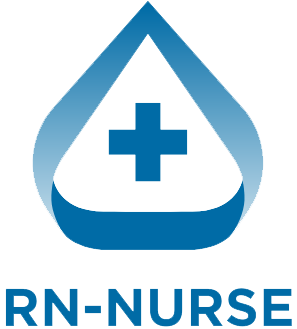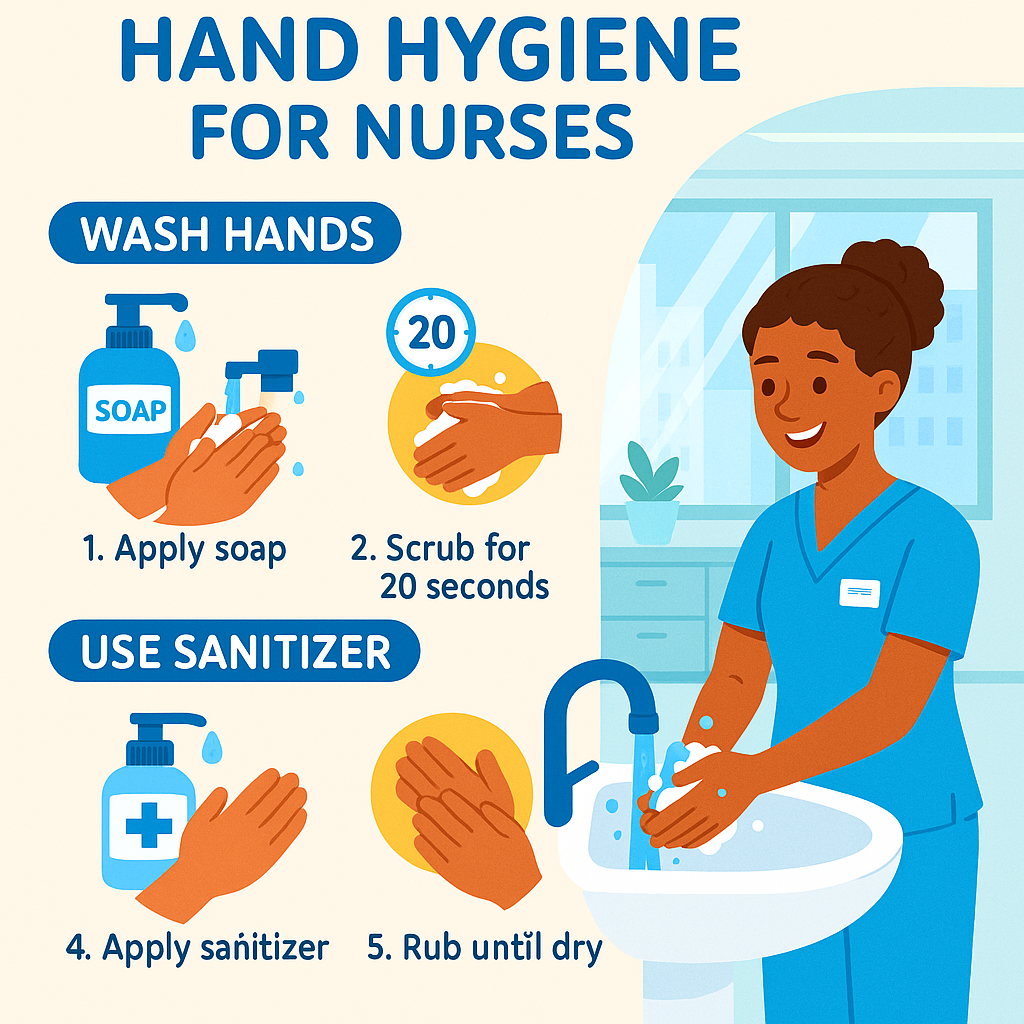Hand hygiene is the single most effective way to stop the spread of germs in hospitals, clinics, and everyday life. For nurses and healthcare workers, clean hands save lives. This guide explains when, how, and why to practice proper hand hygiene — so you can protect yourself, your patients, and your family.
🧴 Why Hand Hygiene Matters
Our hands touch hundreds of things every day. We pick up germs from surfaces, patients, equipment, and even our phones. Without good hand hygiene, these germs can spread to:
- Other patients
- Family members
- Ourselves
- Medical tools and surfaces
The CDC (Centers for Disease Control and Prevention) says proper hand hygiene cuts healthcare-associated infections (HAIs) by up to 50%. That’s huge!
✋ When to Perform Hand Hygiene
Nurses follow the “5 Moments for Hand Hygiene” — use these moments as your checklist:
1️⃣ Before touching a patient
2️⃣ Before a clean or aseptic procedure (like wound care or starting an IV)
3️⃣ After contact with body fluids or blood
4️⃣ After touching a patient
5️⃣ After touching patient surroundings (bed rails, IV pump, curtains)
👉 Bonus tip: Always wash hands before eating, after using the bathroom, after sneezing or coughing, and when hands look dirty.
🧼 How to Clean Your Hands Properly
✅ 1) Handwashing with Soap and Water
Use this when:
- Hands are visibly dirty
- After using the bathroom
- After contact with bodily fluids
- When caring for patients with certain infections (like C. difficile)
Steps:
1️⃣ Wet hands with clean, running water.
2️⃣ Apply enough soap to cover all hand surfaces.
3️⃣ Rub hands palm to palm.
4️⃣ Rub between fingers, under nails, and the backs of hands.
5️⃣ Scrub for at least 20 seconds — hum “Happy Birthday” twice.
6️⃣ Rinse well under clean water.
7️⃣ Dry with a clean towel or air dry.
✅ 2) Using Hand Sanitizer
Use sanitizer with at least 60% alcohol when soap and water aren’t available and hands look clean.
Steps:
1️⃣ Apply a palmful of sanitizer.
2️⃣ Rub hands together, covering all surfaces.
3️⃣ Keep rubbing until hands feel dry (about 20 seconds).
4️⃣ Do NOT wipe hands on clothing before dry.
🦠 Common Mistakes to Avoid
❌ Using too little soap or sanitizer
❌ Rinsing too quickly
❌ Not cleaning under fingernails
❌ Wearing rings or fake nails (they trap germs)
❌ Touching your phone right after washing hands
📌 Extra Tips for Nurses
✔️ Keep nails short and clean — avoid acrylics and nail polish if possible.
✔️ Remove rings and bracelets during patient care.
✔️ Moisturize hands to prevent cracks (dry skin = breeding ground for bacteria).
✔️ Teach patients and families about hand hygiene too!
🗂️ Why It’s the #1 Defense
Many infections spread by touch. Clean hands break the chain of infection and keep everyone safer — from the ICU to your own home.
By following hand hygiene steps every time, you help reduce:
- MRSA infections
- C. difficile outbreaks
- COVID-19 transmission
- Common colds and flu
Small action, big results!

